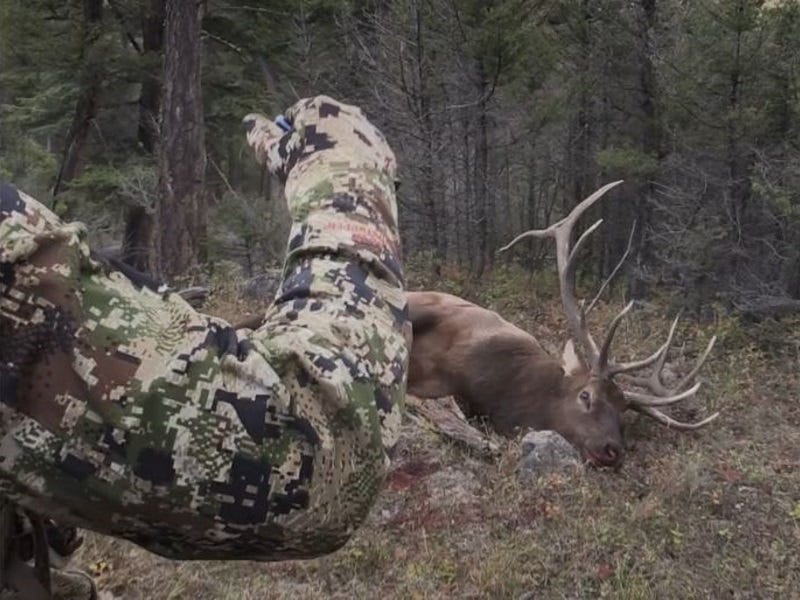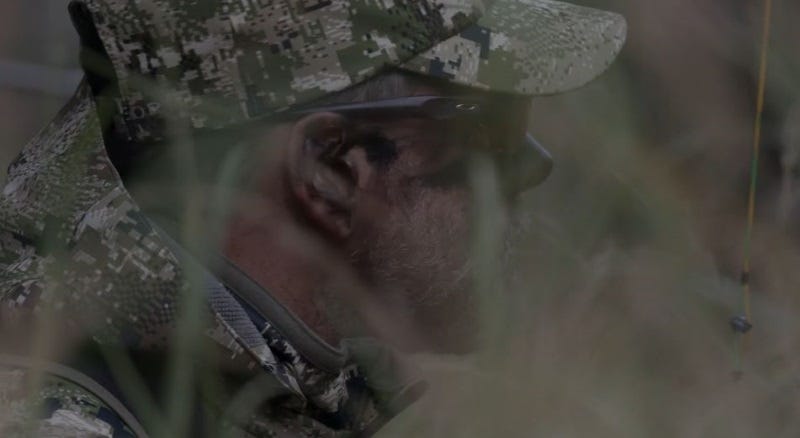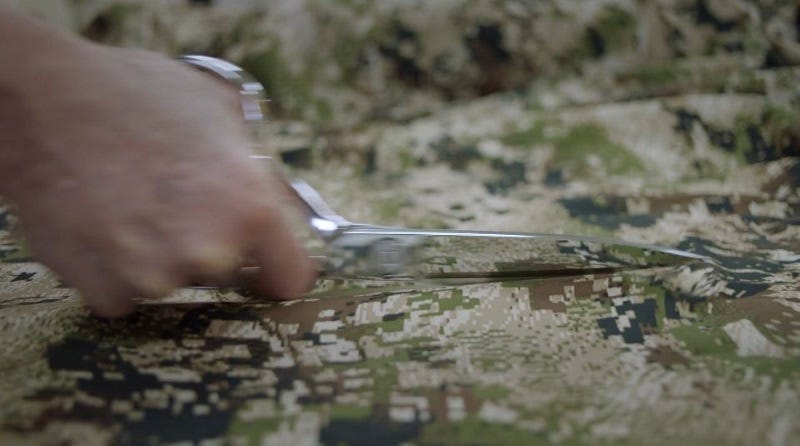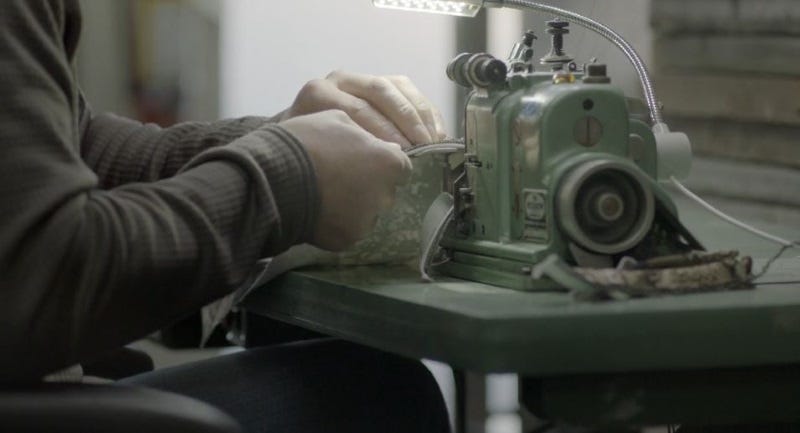Sitka Subalpine Camo: An Interview with Developer John Barklow

Who is John Barklow?
John Barklow is the Big Game Product Manager at Sitka. Before coming to Sitka, Barklow served in the United States Navy for 26 years. As a Navy diver, he worked all over the world and eventually began teaching diving to Navy SEALs. In his spare time, Barklow pursued his mountain guiding credentials and began teaching these skills to the military as well.
Post 9/11 he was reassigned to Kodiak, Alaska, where he trained special operations forces to live and fight, unsupported, in remote mountain ranges.
During the first year following 9/11, the U.S. military lacked suitable gear for modern day mountain warfare—their gear had not been updated since the Cold War ended. This meant that Barklow and other members of the military turned to high-end mountaineering and outdoor companies to provide the technical solutions the military needed to fight a global war on terrorism.
Check out our selection of Sitka gear right here.
In the months following initial military action in Afghanistan, Barklow worked with Sitka, Patagonia, Mystery Ranch, and others to develop this gear. Barklow would spend the next 15 years in the military training and equipping soldiers for combat in mountain and subalpine environments.
After he retired from the military, Barklow started talks with Sitka. The vetting process lasted almost a year as Sitka was basically creating a “Big Game Product Manager” position. When Sitka hired Barklow—the Subalpine Pattern was one of his first priorities.

What is Sitka? Gear specific to niche/not an “all purpose” solution.
Most of the advancements in technical clothing over the last few decades have come from mountaineering. To make a great ice climbing jacket, you must understand individual movements, the sequences in which they happen, the tools and the dangers of climbing ice.
Sitka borrowed heavily from the technical advancements in mountaineering apparel, but it would be pretty useless for them to just slap a camo pattern on climbing gear. Hunting requires completely different movements, different sequences, far more variation in output levels, and long stints of absolute stillness wholly unique to the pursuit of wary quarry.
Plus, a January duck hunt presents very different challenges to the design, function and fit of hunting apparel than an August sheep hunt.
Sitka confronts every situation through a process they call “purpose-built design.”
Why do we need yet another big game hunting pattern?
For 2017, there has been a new addition to the Sitka “Big Game” camo line. This new camo is different than the “Open Country” pattern that everyone has come to know and respect. While the Open Country pattern is here to stay, Sitka brought on a bevy of experts, including hunting guides, and experts in animal vision, to create a new “purpose-built” pattern for hunting ungulates. This GORE OPTIFADE™ Concealment Subalpine™ pattern is designed specifically for stalking and ambushing ungulates from ground level in tree-covered and vegetated terrain. The concealment technology is optimized for engagement ranges of 50 yards and less.
This new pattern has been in “beta” since late 2014 and involved an incredible amount of research and field-testing—Sitka even used computer programs modeled on the ungulate eye so they could take the 36 “subalpine failures” out into the field to test. They dressed in the camo, took the camo into the areas where it was meant to be utilized, and took pictures. Analysis and expert opinion helped to perfect this new camo, which is built to fool the ungulate eye.
Interested in purchasing Sitka gear?
So why did Sitka think we needed a new camo line? Because a niche group of hunters are close-encounter stalkers, guys and gals out there on the ground, calling in their quarry to where they can sometimes hear them breathing.
And this new pattern is here because Sitka asked a question that may not have been asked before: “How do these animals see?” That question lead to two years of development before landing on the new GORE OPTIFADE™ Concealment Subalpine™ pattern.
The development of this pattern is a story in itself.

Sitka’s Big Game Camo: How do Deer and Elk See?
To get the new line of camo at Sitka, first they had to ask these questions: How can I hide from deer? Do we really care if deer see us? What if they do see us? Wouldn’t it be cool if they just went back to eating acorns? What if we could get away with a little more movement? How would we have to look to make that possible? What would the deer have to see, or not see? And, finally, How do deer see the world, anyway?
“Deer vision is very different from human vision,” says Dr. Jay Neitz at the University of Washington Medical School who came on to help Sitka research this project.
And he should know—he studies animal vision and developed with his wife a gene therapy that cured colorblindness in a pair of squirrel monkeys, turning them from dichromats – animals whose eyes contain only two types of color receptors – into trichromats – animals with three color receptor types, like most humans… so, basically, he knows the animal eye.
“A deer’s sight picture is more than twice as wide as ours,” he said.
Nietz continued: “In fact, they see in 280 degrees compared to our measly 120 — so, it’s like they’re seeing in panorama. With that enormous swath of vision, deer lose a little bit of clarity, so if we see 20/20, deer see a slightly blurrier 20/40. Further, deer eyes are equipped with many more rods than ours — highly sensitive photoreceptors that can’t detect color, but can be triggered by a single photon. They see much greater detail in much darker conditions than we can, albeit in black and white.”
Read more about how to tune your bow... DIY style.
“And it’s not just deer we’re talking about,” he continued, since ungulates — hoofed animals like deer, elk, goats, sheep, and pigs — all evolved with very similar eyesight. “They’re all dichromats with cones that perceive yellow and blue, meaning they’re colorblind to the red spectrum.”

So How do you Trick the Ungulate Eye?
You hire someone that helps hide humans from other humans in warzones… millions of humans.
Sitka reached out to Guy Kramer. In 2014, when the research and development started for the Subalpine pattern, Cramer's algorithmic digital patterns concealed more than one-million soldiers in about a dozen countries worldwide, and those numbers have grown substantially.
In a simple sense, Cramer uses algorithms to create digital camo patterns that accomplish two things—first these patterns break the silhouettes of the wearers, and second, they “delay” recognition of a subject by creating smaller, more detailed patterns that make the hidden wearer appear to be part of the background.
This is our full catalog of archery equipment that we stock online.
So, those two people (Cramer and Neitz) were integral in getting the science of sight, and the digital patterns to disrupt that site, into place. But what did the process look like? That’s where John Barklow, comes in—

Big Game Product Manager: 36 Failures of the Subalpine Pattern
Barklow coordinated the field-testing and recon from the mountains where the Subalpine Pattern was created. Barklow was given the responsibility of having final approval. His job was “in-the-field” viability, offering feedback and recommendations to the design teams working on the new pattern. You may think with all the scientific research, all the algorithms and planning, Sitka could just press “print” and have a new camo pattern perfect for close contact in the subalpine areas where ungulate hunters stalk. But you’d be wrong.
The initial patterns came out to Barklow… and went back to the design team with feedback from the field multiple times. Each time, Barklow adjusted and sent them back into the field. Sitka then redesigned the redesigned patterns based on Barklow’s pictures and feedback and sent him new patterns. Those new patterns came back to Barklow, and went back to design with feedback… and he kept sending the preliminary camo patterns back to the design team to be made “just a little bit better.”
Find out about the history and the man behind Duel Game Calls, Weston Clark.
Before the new Subalpine Pattern was given the Sitka stamp of approval, it was sent back to the science of Dr. Neitz and the algorithms of Guy Kramer and redesigned 36 times. On the 37th iteration of the GORE OPTIFADE™ Concealment Subalpine™ pattern, the cameraman was unable to focus on the model, because he couldn’t see the model, from inside 25 yards—so, Barklow had to stand next to the model for the cameraman to effectively focus on the camouflaged model.
That should give you a pretty good indication of how well this camo works in the field.

Future Developments in Sitka Big Game Camo?
“This was the first product development that I was on 100 percent,” Barklow said during a phone interview in June. “I came on in 2014, and we’ve been developing this product for that long. It wasn’t quick.”
So, we asked, what’s next from Sitka?
“Well, it’s huge—like Subalpine, we will be going down the rabbit hole and getting into a different kind of hunting,” Barklow said. “I can say one thing, maybe. 2019 will be a good year in the Sitka line as well. Like the Open Country pattern, which is completely different than the new Subalpine Pattern, you won’t need to switch camo… but you’ll know there’s a definite choice you have.”
And with that, we’d like to introduce you to your next, under-50-yard, close-encounter camo: Sitka’s GORE OPTIFADE™ Concealment Subalpine™ pattern.

